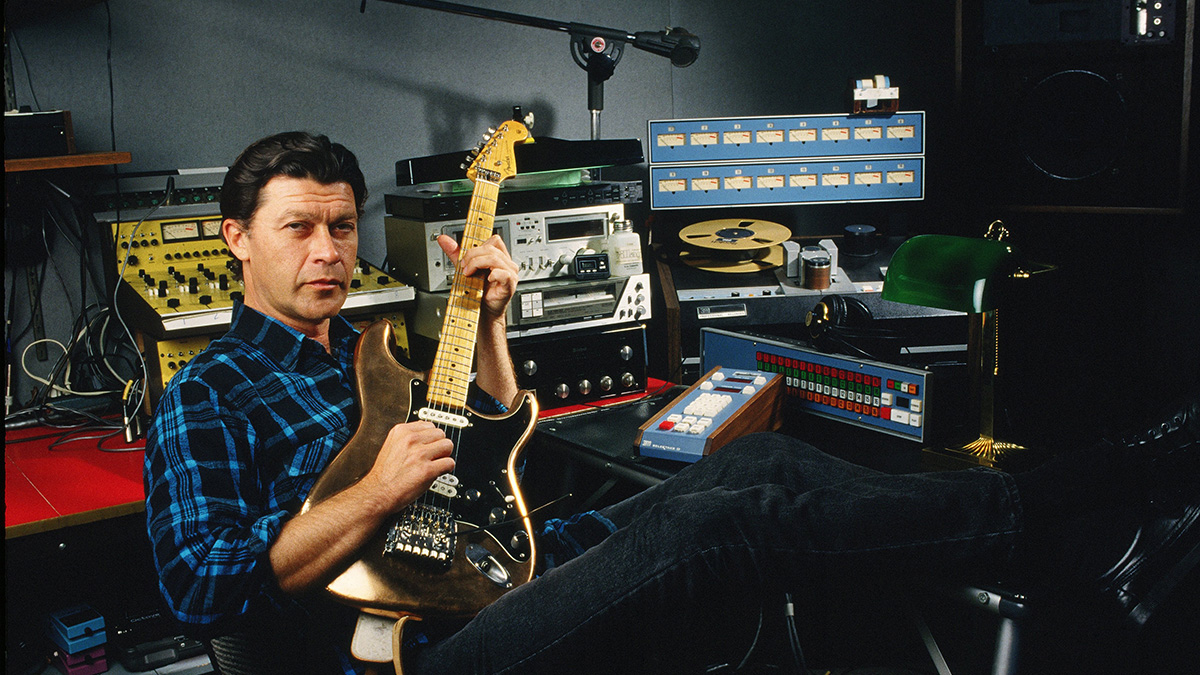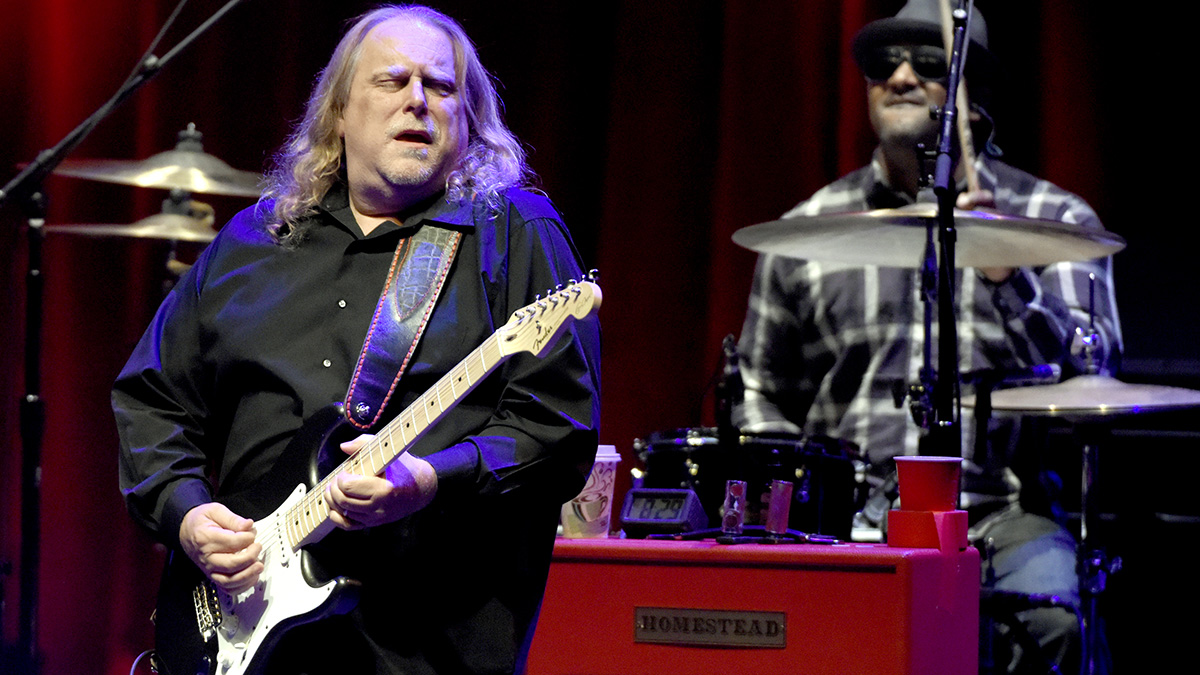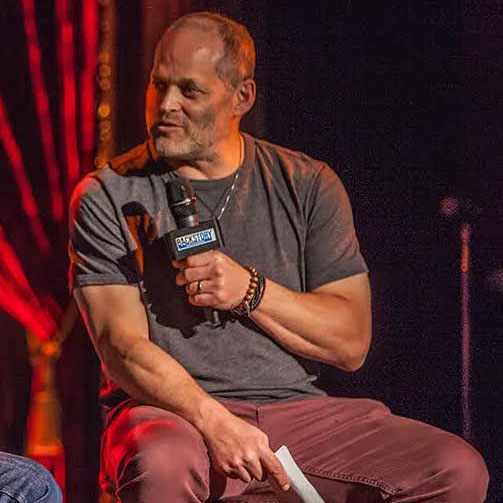“His solos and fills always captured the mood, emotions and significance of the songs. They were never just good licks”: Robbie Robertson’s 10 greatest guitar tracks

Robbie Robertson, who died August 9 at age 80, was best known as the guitarist and chief songwriter for the Band. Over the years, his songwriting came to be better known than his guitar playing because of the fantastic catalog of timeless tunes that includes The Weight, Up On Cripple Creek and The Night They Drove Old Dixie Down. But Gov’t Mule guitarist Warren Haynes points out that Robertson’s playing and writing are so intertwined that they’re impossible to separate.
“I think that people who consider themselves songwriters and/or singers as much as musicians have a different way of approaching solos,” Haynes says. “Because they’re so song-oriented, they think not just about the melody or notes of what they’re playing, but the lyrics, emotions and mood of the song as well. Robbie’s solos and fills always captured the mood, emotions and significance of the songs. They were never just good licks.”
Haynes has spent a lot of time doing a deep dive into the music of the Band and Robertson’s guitar playing in recent years as he put together and led The Last Waltz Tour, an all-star conglomeration of musicians who have done several tours playing the Band’s hits. Breaking down and learning the songs, Haynes was struck by how many of Robertson’s guitar licks “feel like they’re part of the song.”
“That’s kind of the challenge in playing his music,” Haynes says. “If you’re going to cover a song, you have to decide what you want to reinterpret and what you want to pay tribute to and play precisely as composed. I was pretty taken by how many of his parts must be played as written for the song to work – and that’s even though he often played them different ways on different performances, or recorded takes.”

Even then, Haynes says, the songs of the Band are like architecture, with each musician’s playing being completely based on what the others are playing. When one of them changes, they all do, sometimes in subtle ways that may be barely noticeable to a listener but are immediately apparent to a group of musicians trying to recreate the songs.
“They just had that unique chemistry where their personalities all shone, but there was something about the way they blended together that made the whole greater than the sum of its parts – but each little part was essential to that,” Haynes says. “When you study what he’s actually playing, it can be surprising, especially since there are two keyboards and he’s fitting in there between them.”
The Band initially came together backing rockabilly singer Ronnie Hawkins, did an intensive internship as Bob Dylan’s first electric band in 1965-66, then emerged as a singular artistic voice, creating rock laced with country, blues and other folk music, essentially giving birth to what we now know as the Americana genre.
Get The Pick Newsletter
All the latest guitar news, interviews, lessons, reviews, deals and more, direct to your inbox!
That can all be heard on their 1968 debut, Music from Big Pink, an album that had such a profound musical impact on their fellow musicians: Eric Clapton broke up Cream after hearing it; George Harrison went to Woodstock, New York, to ask if he could join the group (The Beatles were still very much together, by the way).
They followed that up a year later with a self-titled album so full of classic songs that it could be mistaken for a greatest-hits package. Most of the group’s material was written by Robertson, and the Band’s first two albums included some of rock’s most original, indelible songs, which combine vivid imagery with a touch of impressionism; they sound utterly original and like folk songs that have been passed down for generations.
“Their music was so organic that it sounds like it’s been here forever,” Haynes says. “At some point, a lot of the music you grew up with doesn’t mean as much as it once did; it loses its appeal, even as you can understand why you loved it. The music of the Band just stands up. It’s the epitome of timeless music.”
With some help from Haynes, we’ve selected 10 essential tracks to pay tribute to Robertson’s legacy.
1. Who Do You Love – The Band, ft. Ronnie Hawkins (The Last Waltz, 1978)
While this performance is from Robertson’s last appearance with the Band – their Last Waltz farewell concert, which took place Thanksgiving Day 1976 at San Francisco’s Winterland Ballroom – it takes them all back to their roots backing rockabilly wild man Ronnie Hawkins.
You can hear the band’s chemistry and in-sync playing following the singer’s every move as he rips through the Bo Diddley classic. While it doesn’t feature Roberton’s most original or impressive playing and, of course, he didn’t write the song, you can’t understand his whole career unless you grasp this cornerstone. As much as he became renowned for his songwriting and sharp-edged but pithy playing, he started his career as a burning-hot teen prodigy, joining Hawkins’ ace band when he was just 16.
You can’t understand his whole career unless you grasp this cornerstone
That’s when Robertson went from Toronto to the Mississippi Delta with Hawkins; he quickly immersed himself in the region’s musical history, starting at a Memphis record store.
The city, he said, was “the musical center of the universe,” and Robertson spent every spare dime on records, immersing himself in the guitar work of Hubert Sumlin with Howlin’ Wolf, as well as Muddy Waters, Robert Johnson and B.B. King. “Hearing their great vibratos made me determined to figure out how to do that,” Robertson said. This recording is a window into that development.
2. Like a Rolling Stone – Bob Dylan (Bootleg Series, Vol. 4, Bob Dylan Live 1966)
When considering Robertson’s greatest moments, it’s hard to overlook his days backing Bob Dylan on the latter’s 1966 tour, playing ripping leads as fans screamed “Judas,” outraged by Dylan’s shift from solo acoustic artist to leading a ripping, rocking band.
You can hear the chemistry the Band already possessed, and you can feel the defiance that the whole group seems to be taking along with Dylan in standing their ground in the face of aggressive opposition.
“It was a deep education on the magic of music and life,” Robertson said in his final Guitar World interview. “You couldn’t have written a more amazing story, and that forged the Band. The shit we went through was incredible. Hooking up with Bob Dylan was like entering The Twilight Zone of music. You thought, ‘They’re going to wake me up tomorrow because all of this is impossible.’”
3. The Weight – The Band (Music from Big Pink, 1968)
The Weight is probably the song that Robertson will always be best known for.
His career after the Band was largely focused on his work scoring movies, particularly for Martin Scorsese; we have Robertson to thank for the amazing Goodfellas montage, which uses Derek and the Dominos’ Layla to such stunning effect. But movies informed his art and inspired his writing from the beginning, and The Weight plays out like a vivid, impressionistic slice of modernist filmmaking.
“I became a movie bug when I was quite young,” he said. “Even at eight years old, I remember going to see movies and just living inside them. It just touched a nerve deep inside me.”
Later, living in New York City and starting to really explore songwriting, he discovered the scripts of great filmmakers including Akira Kurosawa, Howard Hawks, John Ford and Orson Welles, and reading them was life-changing. “They revealed something to me that was very valuable and inspired me to write the stories in songs,” he said.
The Weight comes into focus when you think of it that way. The live version from The Last Waltz featuring the Staple Singers is also excellent and could easily be subbed in here, but the original was a bedrock of the group’s approach and sound.
4. King Harvest Has Surely Come – The Band (The Band, 1969)
King Harvest (Has Surely Come) is the last track on the Band’s second album, and it’s a stunning composition on all fronts, a funky tune that’s also a cautionary tale about a farmer praying for a good harvest that will pull him out of a downward spiral. He’s battling bad weather and a union boss who doesn’t exactly seem to have his back.
The music is similarly complex, moving through different sections and vocalists without ever losing its pulsating groove. It’s a testament to the group’s vitality, and a prime example of why the other members became disenchanted that their contributions weren’t recognized with songwriting credits; the group collaboration seems evident. Throughout the whole song, Robertson’s playing is magnetic, compelling and pungent.
“I always try to figure out what to play on this song, and it never comes out right,” Haynes says. “I’ve heard a bunch of versions and he plays something different on all of them, which is fascinating. There’s a great outtake where his playing is completely different than what’s on the album. It’s cool to hear them evolve or just change completely, but the album version stands out.”
5. Up On Cripple Creek – The Band (The Band, 1969)
Up On Cripple Creek is another Robertson song that sounds like it’s been around forever, and it combines elements of virtually every American musical genre. “When you dig into the guitar parts of Cripple Creek, they are different from what you expect,” Haynes says. There’s a reason this is the first full song on The Last Waltz. It swings out of the gate and never slows down.
6. The Shape I’m In – The Band (Rock of Ages, 1972)
The lyrics of The Shape I’m In, off the Band’s third album, Stage Fright, expressed a sentiment that was more heartfelt and personal to Robertson than anyone realized at the time. He was tiring of life on the road and casting a wary eye toward the abuse that was starting to weigh down the group – the shape they were in was increasingly alarming.
The live album Rock of Ages captures a spectacular show at NYC’s Academy of Music on New Year’s Eve 1971, with a terrific horn section arranged by New Orleans master Allen Touissant. It was in many ways a capstone on the first era of the Band and a preview of The Last Waltz.
7. Acadian Driftwood – The Band (Northern Lights, Southern Cross, 1975)
Acadian Driftwood tells the story of the French-Canadians’ exile and how they made their way south to Louisiana to become Cajuns. It’s another achingly beautiful song, lyrically and musically, this time driven by Robertson’s acoustic guitar.
“He’s playing open chords with a capo, and that’s what makes that song work,” Haynes says. “If you try to learn it without the capo, the parts don’t make nearly as much sense.”
8. It Makes No Difference – The Band (The Last Waltz, 1978)
It Makes No Difference is one of the most beautiful, emotional, aching songs in the Band canon, and it really comes alive on stage, particularly the excellent version from The Last Waltz.
It is also a great example of how Robertson’s guitar parts are a perfect echo of the mournful lyrics and bassist Rick Danko’s heartfelt, passionate singing, an all-time great vocal performance, with his voice cracking and straining in all the right ways and places to emphasize the song’s emotional depth.
“Robbie’s playing has this melancholy thing about it that perfectly reflects the song’s themes and feel,” Haynes says. “And the intro is perfect. It sounds relatively simple, but I realized I was playing it wrong. I don’t want to mimic everything, but that part is essential to the song sounding right, and he plays a harmony part, where one note goes up and one note goes down.
“It’s a diad, but instead of playing the same inversion twice, he switches it with the part in harmony, and it makes total sense once you realize what he’s doing.”
9. Further On Up the Road – The Band, feat. Eric Clapton (The Last Waltz, 1978)
Hey, this is Guitar World! No-one else would include the Band’s romp through this Bobby “Blue” Bland gem to be one of their essential tracks, but it’s so enlightening and just fun to hear Robertson stand toe to toe with Eric Clapton and rip smoking-hot blues leads.
Haynes says he “never even thought of comparing Robertson to another guitarist” – he’s just too singular – but he and Clapton clearly share roots, and there are many alternate paths Robertson could have taken that would have more fully explored his guitar hero roots. This performance offers one glimpse of that.
10. Ghost Dance – Robbie Robertson (Music for the Native Americans, 1994)
Robertson directly addressed his Mohawk and Cayuga heritage on this 1994 solo album, recorded with native musicians the Red Road Ensemble for a documentary called The Native Americans. Ghost Dance is a highlight that goes right at the theme of maintaining tradition and integrity in the face of violence. “They outlawed the Ghost Dance / But we shall live again.”
Robertson grew up in part on a reservation outside of Toronto, and he told me in 2019 that it was where his musical awakening happened. “I got introduced to music on a real level on the reservation, and it was part of that culture and heritage,” he said. “Everybody played music, and I needed to be in the club.”
Alan Paul is the author of three books, Texas Flood: The Inside Story of Stevie Ray Vaughan, One Way Way Out: The Inside Story of the Allman Brothers Band – which were both New York Times bestsellers – and Big in China: My Unlikely Adventures Raising a Family, Playing the Blues and Becoming a Star in Beijing, a memoir about raising a family in Beijing and forming a Chinese blues band that toured the nation. He’s been associated with Guitar World for 30 years, serving as Managing Editor from 1991-96. He plays in two bands: Big in China and Friends of the Brothers, with Guitar World’s Andy Aledort.

![A black-and-white action shot of Sergeant Thunderhoof perform live: [from left] Mark Sayer, Dan Flitcroft, Jim Camp and Josh Gallop](https://cdn.mos.cms.futurecdn.net/am3UhJbsxAE239XRRZ8zC8.jpg)









